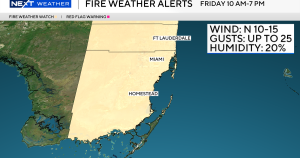The country has so many cultural and historical treasures that relatively few are known to tourists. Our tipsters share their discoveries, from ancient hill towns to a mini Venice
Tell us about your favourite travel discoveries of the year – the best tip wins a £200 holiday voucher
Approaching the town of Brisighella in Emilia-Romagna, it feels as though you are rapidly incorporating yourself in the backdrop of a Renaissance masterpiece, with dramatic rocky hills with singular trees perched upon them, and mysterious towers standing in solitary self-possession – leaving you to wonder what they must have witnessed over the years. The town is the perfect launchpad to explore such remarkably beautiful scenery, but it is also absolutely worth exploring its many medieval alleyways and its particularly unique elevated path, granting private nooks to take in the town’s charm.
Gioia
Guardian Travel readers’ tips
Every week we ask our readers for recommendations from their travels. A selection of tips will be featured online and may appear in print. To enter the latest competition visit the readers’ tips homepage
–
We have just walked the Via dei Frati from Caltanissetta to Cefalù on Sicily. During the 54-mile walk across the Madonie mountains, we saw no walkers or tourists. Views are sublime and each day finishes in a beautiful Sicilian village such as Gangi. Although no one spoke English, communication was never a problem.
Michael
The southern Basilicata region is packed with interesting places, but Venosa, birthplace of the Roman poet Horace, is unmissable. Once a major centre, now a remote small town, it has extensive Roman ruins, ancient Jewish catacombs, a breathtaking castle, beauty and interest at every turn. Local food and wine is terrific. Nearby, the castles at Melfi and Lagopesole and the ducal palace at Pietragalla are among several places that would be internationally famous if they were located in more touristy areas, but you can’t easily go wrong in this part of Basilicata as long as you skip Potenza.
Andy
Eco hotel Mulino delle Cortine, lost at the end of a three-mile dirt track deep in the Apennines east of Florence, is almost cartoonishly peaceful. With its shaded river swimming pool accessed by climbing down a rope into the riverbed, array of hiking trails in the surrounding forests and along streams and not a single bar of phone reception, it’s the perfect place to truly switch off. Rustic plates of pasta, regional cheeses, meats and cheesecakes served slowly under planetarium skies add to the appeal.
Cath
In the heart of Friuli-Venezia Giulia in the north-east, Cividale is a destination that feels like stepping into a living postcard. This Unesco world heritage site is a treasure trove of history, from its Roman roots to one of Italy’s most remarkable medieval sites: the exquisite eighth-century Tempietto Longobardo built by the Lombards. Wander through cobblestone streets, cross the Devil’s Bridge and soak in views of the emerald Natisone River. Beyond its beauty, Cividale offers authentic Italian charm – think family-run trattorias, local wines and vibrant cultural traditions.
Steve Bassett
I doubt many tourists to Italy know about the mini-Venice, 16 miles south of its more famous sibling city, and easy for a day trip. Chioggia is what Venice must have looked like in an earlier iteration, and was actually mentioned by Roman author Pliny the Elder. It also features canals and narrow alleys, and has an important Museum of Adriatic Zoology to boast about, as well as beaches, a fort and medieval architecture.
Michael
Sign up to The Traveller
Get travel inspiration, featured trips and local tips for your next break, as well as the latest deals from Guardian Holidays
after newsletter promotion
I used to live not far from Santo Stefano d’Aveto, and I go back to the town in the Ligurian Apennines north-east of Genoa whenever I can. It’s a great base for exploring the Aveto natural regional park with trails winding around Monte Aiona, Monte Penna, Ramaceto and Zatta, with peaks rising to about 1,800 metres. Small lakes lie in the valleys, perfect for a pause on long hikes. The old Gambatesa mine makes a fun stop, especially with kids. Meals are simple: polenta, mushrooms, San Stè cheese, maybe wild boar. It’s not picture-perfect, just real.
Federico Bozzini
Tucked away in Lazio’s wild heart, Campoli Appennino perches dramatically on the edge of a vast sinkhole, a medieval village wrapped in dense forests, gorges and the hush of mountains. Hikers lose themselves on the Gole del Lacerno trail, chasing waterfalls and rugged ravines, while rescued brown bears roam freely in the village sanctuary. And then there’s the food: truffle tagliatelle at Il Tartufo, cream-filled pastries that vanish in a bite, and wonderful pizza. Hidden, wild and utterly captivating, Campoli Appennino is the kind of place you stumble upon once – and never forget.
Louise Warrington
Loazzolo is the home of a magnificent sweet wine and many fantastic classic sparkling wines. The little mountain villages are breathtaking, especially in the autumn when the landscape is painted in various hues of reds, yellows and greens. With truffles, porcini and hazelnuts too, this area is a culinary feast, best served in the early afternoon sun. This part of the Piedmont region always surprises me, especially because it is so overlooked by non-Italian visitors. Close to the vineyards of Barolo and the beautiful towns of Asti and Alba, it remains a hidden treasure.
Ruan Smit
Even the locals thought it was hot when we visited the archaeological park at Urbs Salvia, south of Ancona in the Marche region. Walking between the perfectly preserved Roman theatre, the temple dedicated to Augusta and the amphitheatre, we sheltered under trees, drinking from our rapidly emptying water bottles. The guide clearly thought we were deranged – mad dogs etc – but free from the crowds of Rome or Pompeii, we had time to marvel at the city before us. Afterwards we detoured to Le Logge, a restaurant in Urbisaglia, the medieval upstart neighbour, and had a perfect lunch in the shade.
Alex




